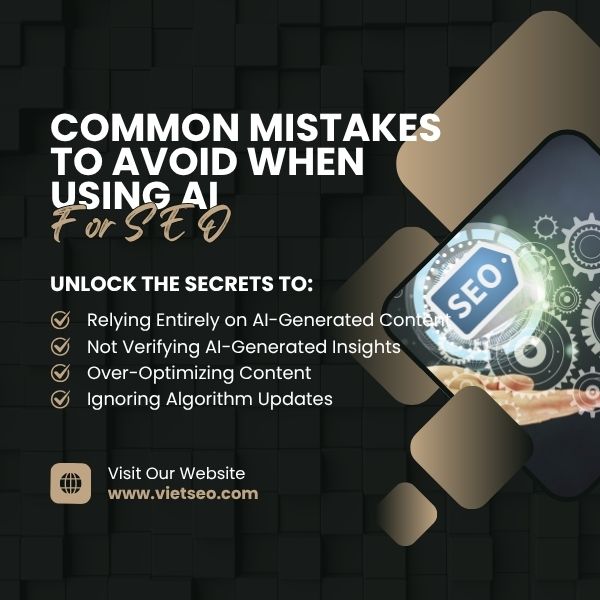Strategic Keyword SEO Mindset Instead of Quick Fixes
When Keywords Are No Longer Just About “Inserting Words”
Keywords – a term that seems familiar in the SEO world – are actually one of the most misunderstood and misused elements. While many are still struggling to “sprinkle keywords” throughout articles in hopes of ranking on Google, SEO experts have moved far ahead with a strategic keyword SEO mindset, focusing on user behavior instead of merely chasing search volume.
This article will not repeat what you’ve heard too often: “what keywords are,” “how to use keywords in titles,” or “inserting keywords into H1 tags.” Instead, we’ll dive into the essence, strategic role, and how to implement keyword SEO properly — so that keywords are no longer misused tools, but real content weapons.
Keywords in SEO: A Look Back at the Essence
1. What Are Keywords – From the User’s Perspective
Keywords are not just the phrases you want to rank for; they are the language users speak when searching for a solution, an answer, or a specific action. Each keyword is a “puzzle piece” that reveals the real need behind the search.
Examples:
- “best running shoes for women” = product search intent
- “Vietnam War history” = informational intent
- “how to fix an AC that’s not cooling” = problem-solving intent
Therefore, keywords are not just an SEO technique. They are behavioral data.
2. Google Ranks Content, Not Keywords
This might sound contradictory, but it’s true. Google doesn’t care how many keywords you use. It cares whether your content addresses the underlying need behind the keyword. So instead of just focusing on “stuffing keywords,” what you need is to understand the search intent behind each term.
Keyword Classification by Search Intent
Understanding the intent behind keywords helps you create content that’s not only technically correct, but also aligned with the real user experience and needs. Below are four main keyword types:
1. Informational Keywords
Examples: “what is coffee,” “how to write SEO content,” “what do British Shorthair cats eat”
Content strategy: blog posts, how-to guides, infographics, explainer videos
2. Navigational Keywords
Examples: “Facebook login,” “Shopee discounts,” “VietSEO blog”
Content strategy: brand name SEO, clear meta titles and descriptions
3. Transactional Keywords
Examples: “buy cheap smartphone,” “home laptop repair service,” “3-day 2-night Da Lat tour package”
Content strategy: product pages, service pages, high-conversion landing pages
4. Commercial Investigation Keywords
Examples: “compare iPhone vs Samsung,” “air purifier reviews,” “career advice for students”
Content strategy: comparison articles, case studies, product reviews, detailed comparison tables
Keyword SEO Based on the Customer Journey
A modern SEO strategy shouldn’t just focus on high-volume keywords, but needs to cover the entire user journey — from awareness to decision. That’s also how professional keyword SEO services approach it, often using the AIDA model (Attention – Interest – Desire – Action) to align content with each stage.
| Stage | Keyword Type | Keyword Example | Suitable Content |
|---|---|---|---|
| Attention | Informational | “what is SEO,” “why optimize a website” | Blog posts, infographics |
| Interest | Investigation | “SEO vs Google Ads comparison” | Explainer videos, analysis articles |
| Desire | Transactional | “cheap keyword SEO services,” “hire SEO top 10” | Landing pages, consultation forms |
| Action | Brand | “contact VietSEO,” “register for SEO service” | CTA, conversion buttons |
How to Choose the Right Keywords
Choosing keywords shouldn’t start with a list of “100 hot keywords,” but with the question: What is my customer searching for? Tools come after.
1. Understand Customers First, Use Tools Later
- Build user personas
- Analyze search behavior across different segments
- Identify their pain points
2. Use Supporting Tools
Some tools to suggest keywords, trends, and competition levels:
- Google Keyword Planner
- Google Trends
- Ahrefs / SEMrush / Ubersuggest
- Answer The Public
Note: Low search volume doesn’t mean low value. Sometimes, these are the highest-converting keywords due to high specificity.
Keyword Grouping & Content Structure
Instead of SEO for each keyword separately, group keywords by topic to optimize content more effectively:
- Main keywords: the core of the topic
- LSI keywords: semantically related terms
- Long-tail keywords: specific phrases closely aligned with user intent
Example topic: "keyword SEO"
| Main Keyword | Related Keywords | Long-Tail Keywords |
|---|---|---|
| keyword SEO | keyword optimization, keyword research | how to choose keywords for SEO services |
Based on keyword groups, you can build topic clusters and structure your content into pillar pages + sub-content, helping Google understand your website better and increase keyword coverage.
Don’t Just SEO Keywords – SEO Behavior
Modern SEO isn’t just about search engines, but about understanding searchers. Here are some updated principles for keyword SEO:
- Focus on search intent, not just volume
- Write for users, not just for Google
- Optimize for conversion rate (CRO), not just traffic
- Diversify content formats: articles, videos, podcasts, infographics
- Regularly update content to maintain ranking
The Role of Keywords in Overall Content Strategy
Keywords are the core of your content system, but must be placed within a broader strategic context:
- Marketing funnel: different keywords for each stage (awareness → conversion)
- Content calendar: schedule articles based on seasonality and trends
- Ad campaigns: align SEO keywords with Google Ads strategy
Keyword SEO cannot be separated from holistic SEO. To do SEO effectively, keywords are the beginning — not the end.
Common Mistakes in Keyword SEO
Here are common mistakes that can cause your keyword SEO efforts to fail:
- Choosing the wrong target keywords (based on volume, not intent)
- Keyword stuffing that sounds unnatural
- Not tracking keyword-based conversions
- Focusing too much on top keywords and ignoring content quality
- Over-prioritizing short, highly competitive keywords
Keyword SEO Is the Art of Understanding
Keyword SEO isn’t about how many keywords you have — it’s about how well you understand your audience and solve their problems. When done right, keywords are no longer just a tool to “rank higher,” but a bridge between your content and real user needs.
Stop doing keyword SEO mechanically. Instead, SEO behavior with strategy, empathy, and precision. That’s the sustainable path for your content to exist, grow — and convert.



